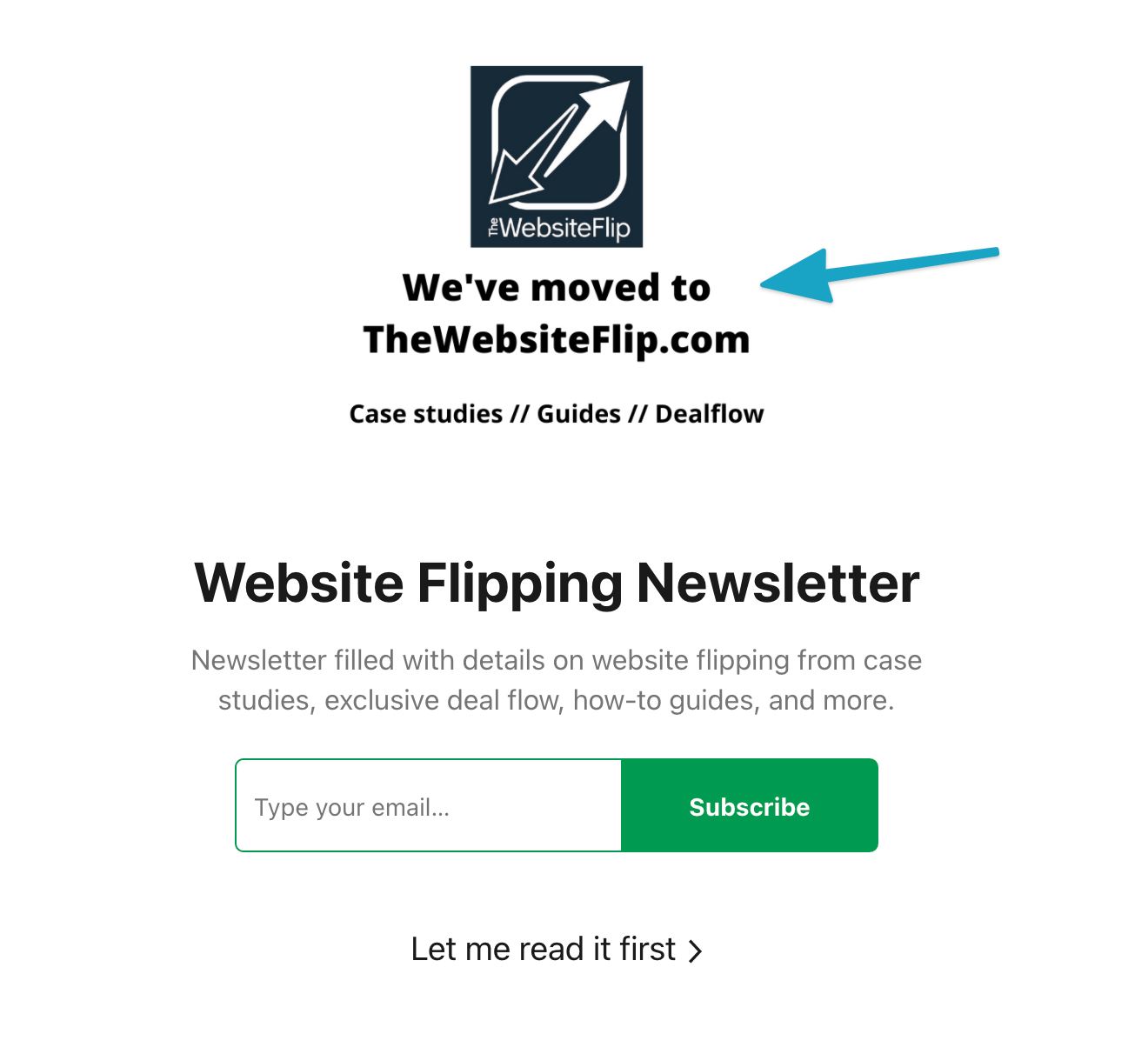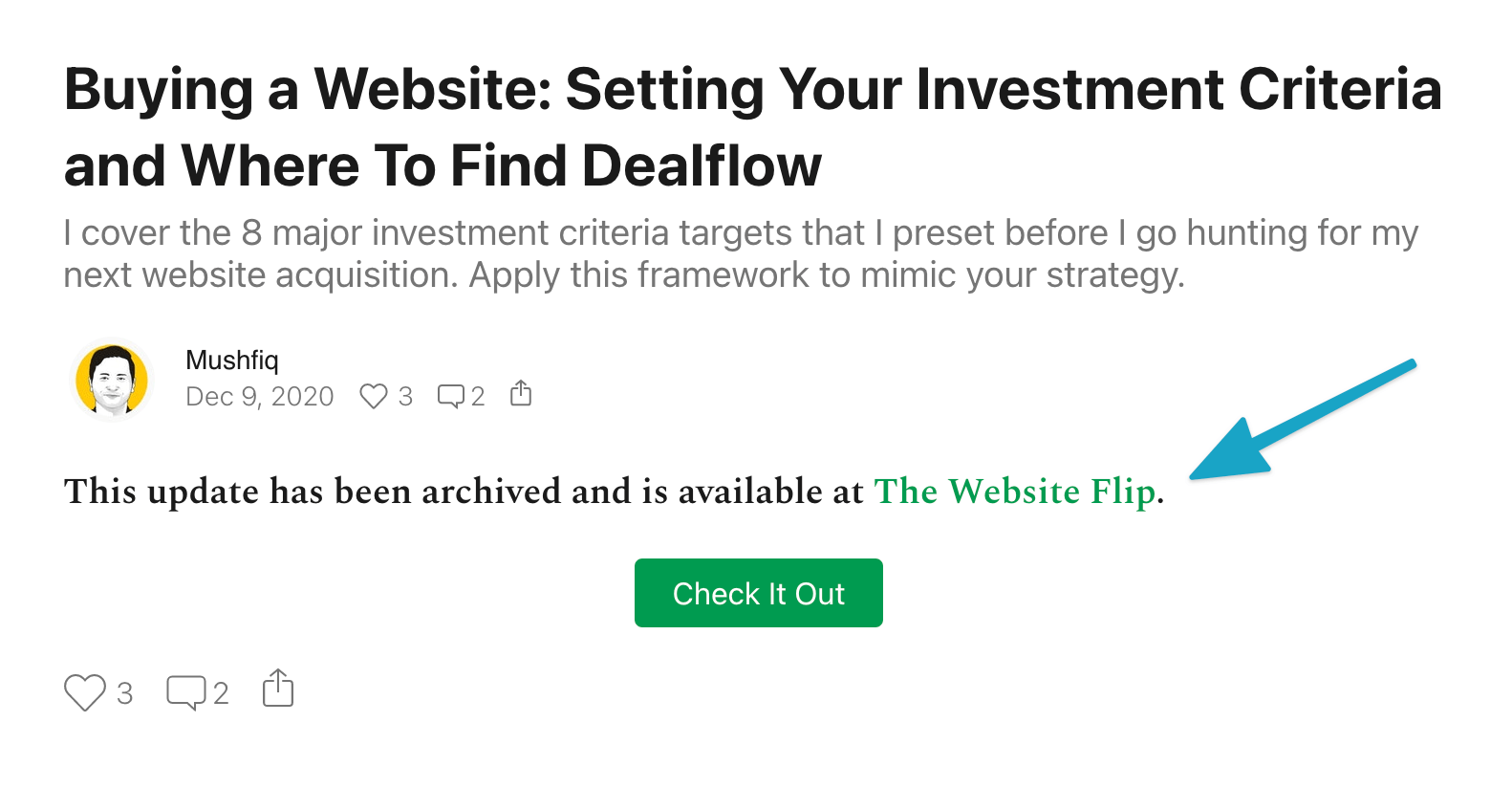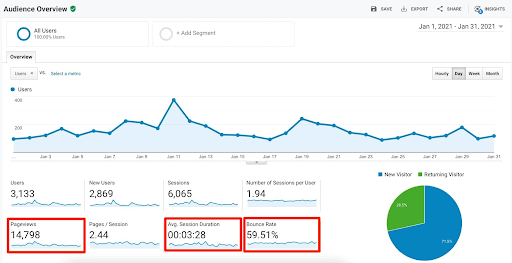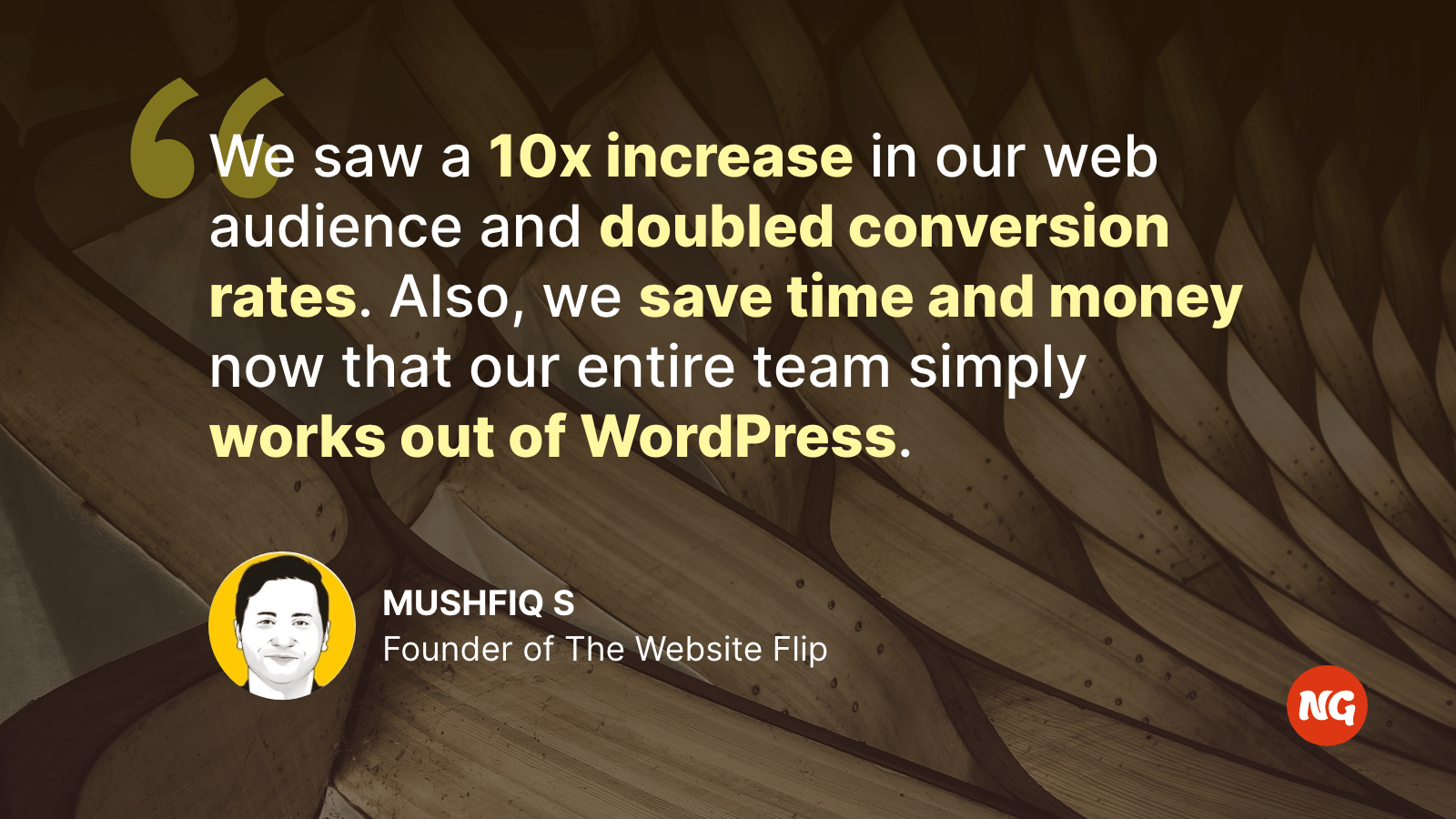newsletter stats
10x
Web audience
2x
Conversion rate
SUMMARY
Mushfiq S, founder of The Website Flip, shares how his team migrated from Substack to WordPress using Newsletter Glue. In the process, they improved SEO and team collaboration. As a result, web audience increased by 10x and conversion rate doubled.
Problem: Our Substack newsletter had no SEO
Without search engine optimisation and limited customization, we felt constrained by Substack.
The Website Flip started it’s days on Substack.
Substack has two major benefits for newsletters when getting started: No monthly fixed costs and easy set up.
However, as digital marketers by trade, we felt Substack was missing a few critical components:
Enjoying this post?
Don't miss the next one.
Subscribe to get our latest product updates and blog posts.

- Proper search engine optimization (SEO)
- Ability to fully customize the HTML/CSS of an email template
- Ability to show/hide elements for email vs front-end site
- Email segmenting and clean up
- Ability to save and re-use templates
- Detailed data
The lack of these features prompted us to find a better solution.
“We landed on Newsletter Glue. The WordPress plugin allowed us to write our content, then send it directly to subscribers at the click of a button – all within WordPress. A big win!”
Solution: Migrate from Substack to WordPress
We now run our entire publication process out of WordPress using Newsletter Glue.
These days, we send our thrice-weekly newsletters using Campaign Monitor instead of Substack.
Instead of bouncing between Campaign Monitor and WordPress, we do everything inside WordPress with the help of Newsletter Glue.
This improves coordination for our entire team and helps streamline our workflow.
Migration: Simple copy & paste and redirection
We migrated 40 newsletters in 1 day.
Here are the 4 simple steps we took to migrate our past issues and set a simple redirection message for future visitors:
Step 1: Copy and paste
Migration was painless and only took 1 day for 40 newsletter issues. We simply copied and pasted each newsletter from Substack into WordPress.
We didn't need to spend time manually recreating the formatting in WordPress. The Gutenberg block editor is able to retain the formatting of each Substack newsletter. For example, headers and images appear correctly formatted.
Step 2: URL change
We didn't want to abruptly close down the Substack publication as that would be confusing for both new visitors and existing subscribers.
Instead, we changed the URL of our newsletter from websiteflipping.substack.com to old.thewebsiteflip.com.
Now, the original substack URL automatically redirects to the new URL – this creates a much friendlier experience for our readers and also hints at our new URL.
Step 3: Update publication logo to point to new site

Substack has limited customisation options, so there aren't many ways we can clearly tell people that we've moved.
One prominent thing we can customise is our publication logo. We got creative and turned our logo into a message letting people know about our move.
Step 4: Remove content and add redirect message

Finally, we removed the content from each past issue and replaced it with a redirection message and link to the new location.
This was done to encourage visitors to head to the main site instead.
From start to finish, this only took a day to complete.
Feature spotlight: Callout cards for sponsored ads
Here are the Newsletter Glue features we use to help our newsletter stand out.
Want these features for your own newsletter?
Want these features for your own newsletter?
Show/hide content block
The show/hide content block hides specific content we don’t want published on the front-end of the site. For example, we sometimes have exclusive offers and insights just for our newsletter subscribers, which we do not share with normal visitors on the web. The show/hide content block lets us do this very easily.
Callout cards
We use callout cards to show sponsored ads. We are able to fully customize the ad to our chosen color scheme, and formatting. Here is an example below:

Metadata
We add the metadata block to the top of every newsletter. This gives us the option to automatically add metadata like author, reading time and a read online link to each newsletter in seconds.

Bonus: Reusable blocks (core Gutenberg feature)
One of the biggest benefits Newsletter Glue unlocks is the ability to use Gutenberg Reusable Blocks in WordPress.
We use reusable blocks to create newsletter templates and components. This saves us a significant amount of time, as we can just plug and play.
Bonus: Helpful support, quick bug fixes and new features
The WordPress ecosystem, being as popular as it is, has many new plugins that launch but are then not maintained or improved.
This has not been our experience with Newsletter Glue. The founders have been quick to fix any issues we found and implement new feature requests.
Results: Improved team collaboration and 10x new audience
Working solely in WordPress gives us more customisation options and saves time and money.
Most other newsletter solutions like Substack and Revue keep you locked within their proprietary platforms. In comparison, WordPress is open source and has a large selection of customization options.
“Best of all, we’re now able to optimize each and every article for search engines. Not only can we capture new email subscribers, we can access an entirely new audience via organic search.”
This also saves us significant time and money now that our team of writers, editors and formatters no longer have to collaborate across multiple platforms.
Our team has been using WordPress since 2008, so finally being able to optimize our workflow and bring newsletters into the WordPress platform is a big deal.
We’ve seen a 10x increase in new audience.
Our subscribers can now read our newsletters in their email inbox or read it on our site. With a proper site design, we’ve been able to dramatically increase the number of minutes on page, bounce rates, and pageviews.

Finally, let me leave you with our January 2021 traffic snapshot:
- 10x increase in new users to the site.
- Pageviews have improved because we provide a better reading experience on our website as opposed to Substack.
- Subscriber conversion rates have doubled from 5% to 10% since we now control the design and placement of our opt-in forms.
- Open rates have stayed the same since the user experience from Substack to WordPress has not changed (i.e., subscribers get long-form content in their inbox with both approaches). This is a good thing since we kept the user experience the same while improving all other metrics.



This is very helpful info., Mushfiq. Thanks for the post. What about freemium or paid newsletters switching from Substack to WordPress? I suppose you could use a membership plugin or paywall plugin to only give access for certain content to paid subscribers like you can with Substack and some other newsletter platforms?
Hey Krystal! Thanks for your comment.
Regarding freemium/paid newsletters: You can definitely use a membership/paywall/content restriction plugin. I’m Lesley, Co-founder of Newsletter Glue. We’ve actually written a step-by-step guide on setting up a paid newsletter using Memberful right here on this blog.
You can also check out this tutorial from Makerpad that has a very similar process but uses Pico.
Here are some other great plugins that might work for you:
Restrict Content Pro
Paid Memberships Pro
Hope this helps! And feel free to reach out if you need more assistance!